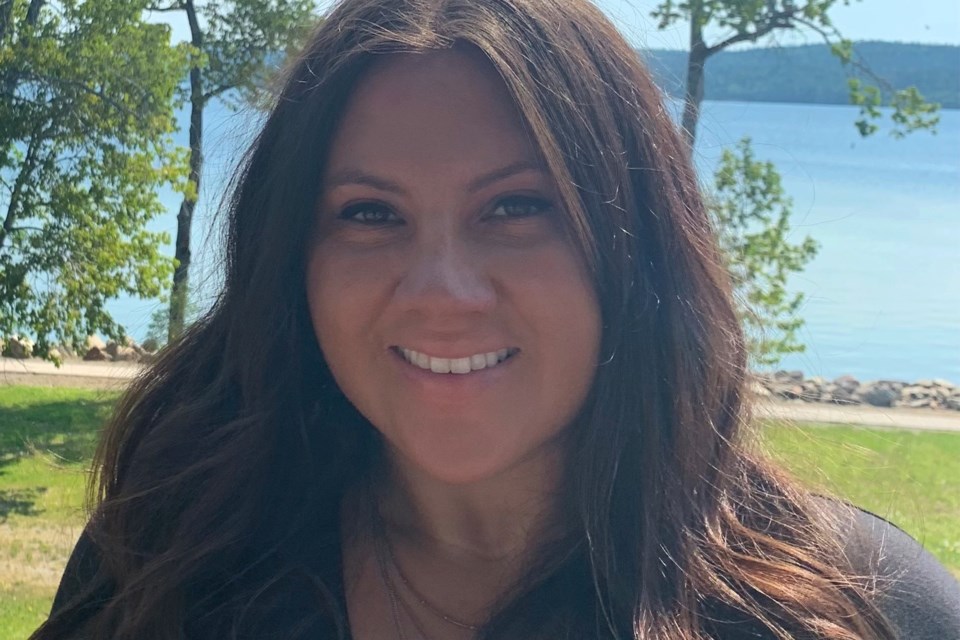Bohdana Innes hopes that the future will look a lot more diverse and she is planning on being a part of making that happen.
Innes is in the process of earning her licence as an architect, working with J.L. Richards and Associates in Timmins as an intern. The firm, she says, felt like the right place to be.
“They have a responsibility to us as Indigenous people and our lands,” she says. “This is the first non-Indigenous company that I heard about that is taking this to heart.”
She is a Moose Cree First Nation member and says being able to work closer to her family and her community has been a plus in her current position.
“My dad still lives in Moose Factory,” she says. “When I was growing up, we used to travel back and forth between Wawa and Moose Factory, and now I’m still doing that.”
Innes has excelled in her path, picking up the 2020 Jay Benedict Award from the Ontario First Nations Technical Services Corporation, which recognizes excellence in First Nations students in housing and architecture.
Innes’ journey to her career started with an early interest in interior design.
“I would sketch out floor plans all the time,” she said about her high school days. “But if you’re doing that, you’re limited by the space you have to work with.”
That set off an idea for Innes.
“If I’m doing interior design, I might as well just build the whole building, because everything is connected,” she says. “If you’re doing both, there’s no barriers.”
As she pursued her education at Humber College in Toronto, she discovered that design was something she enjoyed. While she wanted to take a year off after her time at college, an opportunity to continue her education was too good to pass up.
“McEwen was the only school I applied to, so I was like ‘Well if I don’t get in, I don’t get in,’ and I got in,” she says. “I didn’t even have a chance to think about it, as my mom paid the fee and said ‘You’re going’.”
Innes completed her master's at McEwen School of Architecture at Laurentian University in Sudbury, where she had the chance to study Indigenous architecture.
“That’s when I really learned about Indigenous architecture, and I was really glad and honoured to be taught by other Indigenous architects,” she says. “It was all really exciting.”
She says that while she’s gotten to learn from some of the best Indigenous architects, the community in the profession is small.
Around 10,000 architects are licensed in Canada, but there are fewer than 30 registered professionals who are Indigenous or Métis.
“There are two of us in Treaty 9,” Innes says. “There’s me and Jake Chakasim. That’s why we really need Indigenous youth to be in their fields, because it’s hard right now because we’re trying to break down barriers, but we need more of us.”
She hopes that more Indigenous youth will see architecture as a possible career path.
“We need more Indigenous youth to take up these spaces in architecture and engineering because there’s so few of us,” she says.
As her journey continues, she’s learning more and more about Indigenous architecture, and through that, she says, she’s reconnecting with her own heritage.
“That allowed me to reconnect back to my own culture, and being Moose Cree,” she says. “A lot of the language wasn’t passed down, and some of the ceremonies, but we were always hunters in my family but it’s now reconnecting back to that.”
She says that connection has been a journey of its own, not just about her own history and culture, but other Indigenous communities as well.
“We are taking back those spaces, we’re taking back our culture, and it’s really healing,” she says. “It’s allowing us to reconnect to our values and our traditions, and it’s really important.”
Innes says that her employers have committed to reconciliation with Indigenous communities, and it’s reassuring to know that the will to do that is there.
“I’m learning about my own culture, but through these projects, I’m learning about other cultures like Anishinaabe, and I’m learning so much,” she says. “It’s really healing for me, too.”
“We think of ourselves as technical consultants; it’s really the community that is designing the building because it’s their building,” she says. “There is a technical aspect to it.”
Going forward, she says that she’s not committed to any one path and is looking to see where things lead her.
“I’m searching for knowledge,” says Innes. “I want to be working back with my community and I want to share my knowledge with other Mushkegowuk communities.”
She also says she’d love to see more Indigenous architecture in cities, as it can be a way to start a conversation and share a teaching moment.
“We’re now expressing who we are in our buildings, and it can bring people in to learn more about us through our buildings,” said Innes. “We’re Indigenizing our spaces.”
She says working in cultural elements into design can be a jumping-off point for conversations.
“It teaches you, for example, if there’s symbols on the building, you can ask what they mean, and learn about our stories,” she says. “It’s a teaching tool for everyone, people who are reconnecting, and people who want to learn.”
Innes says that these buildings and projects can help the Indigenous communities claim their space.
“It can reflect who we are,” she says. “It says we’re still here and we’re not going away.”
— TimminsToday




